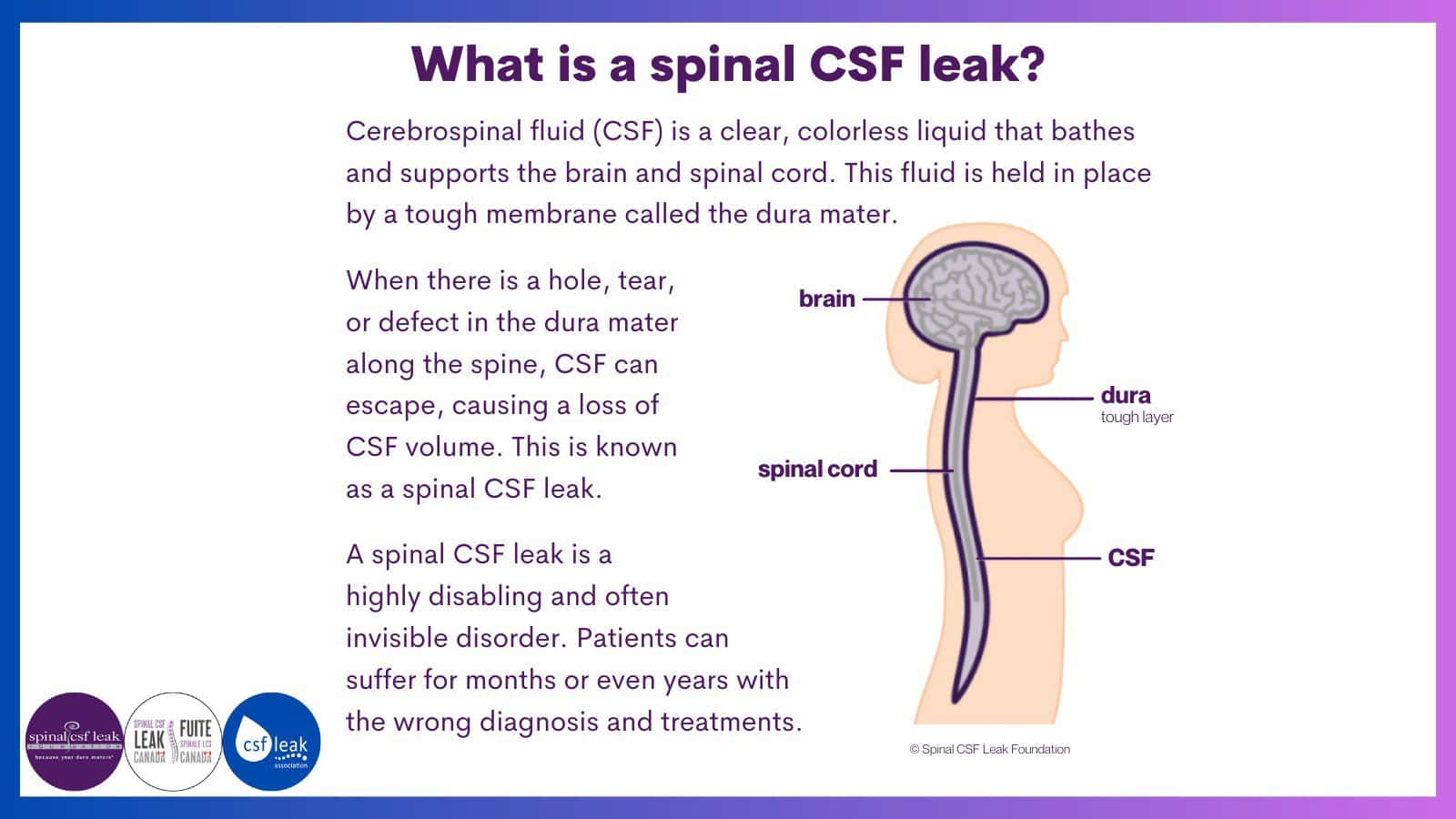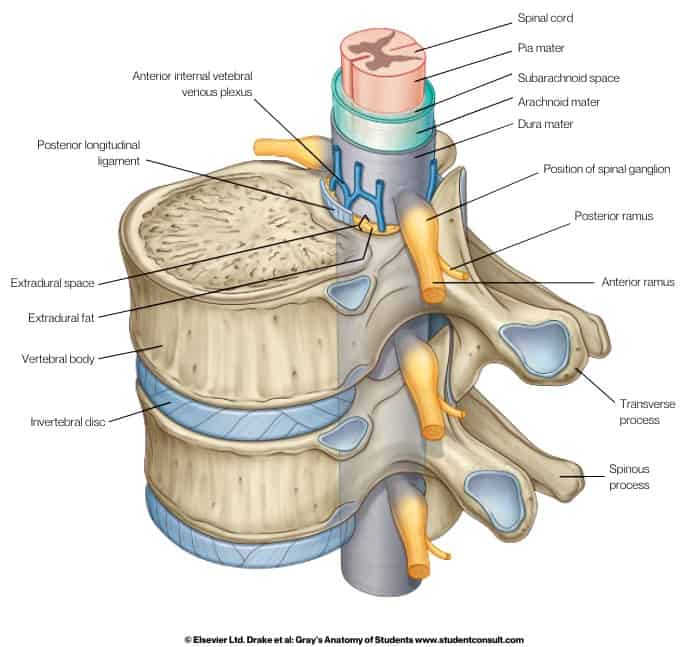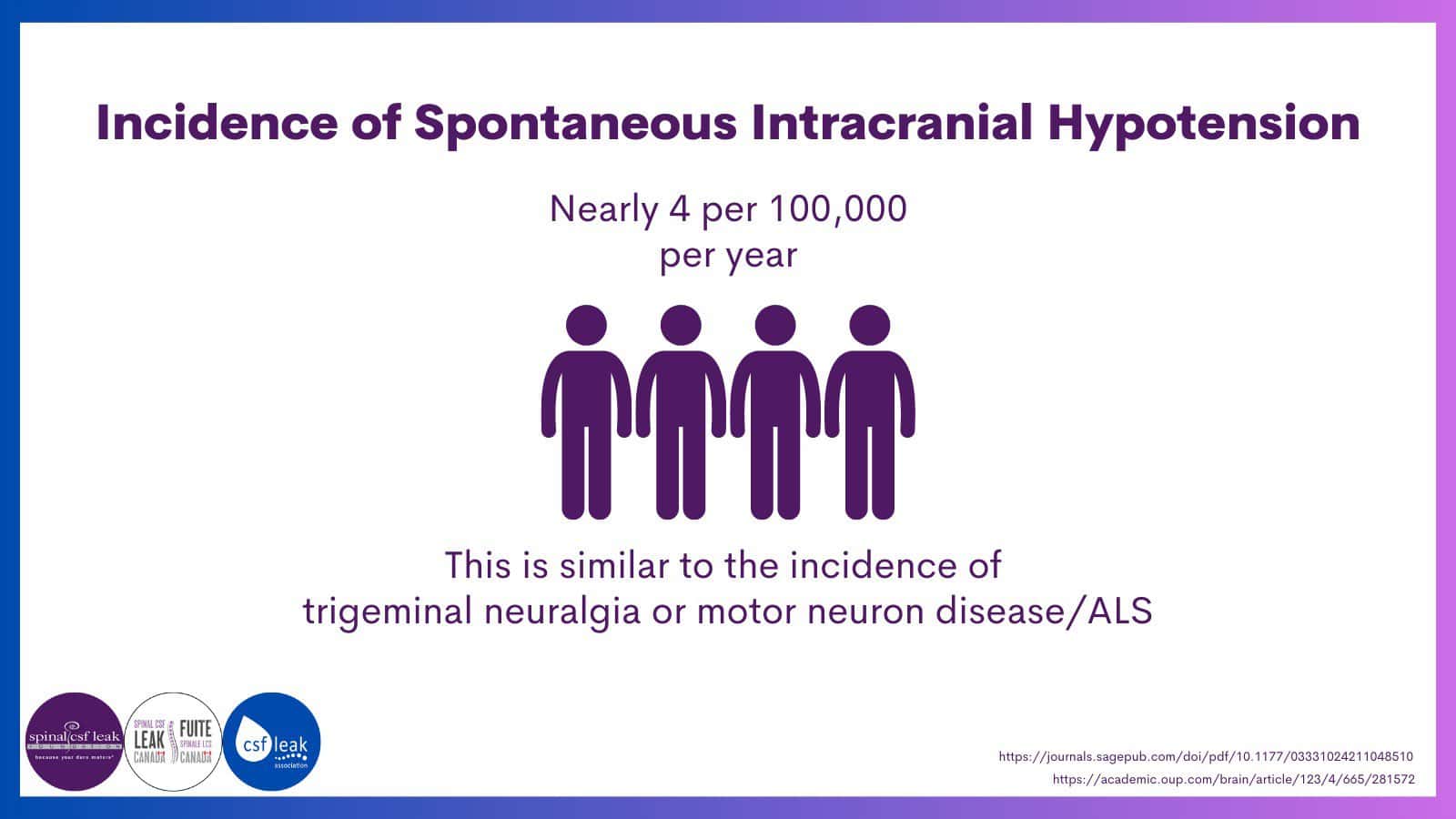Welcome to LeakWeek 2023!
Welcome to LeakWeek, our annual awareness week for spinal CSF leak and intracranial hypotension! This year we’re teaming up with Spinal CSF Leak Canada and the UK CSF Leak Association to share information, resources, and facts about spinal CSF leak to raise awareness about this debilitating condition that affects people worldwide.

What is a spinal CSF leak?
The brain and spinal cord are bathed in a clear, colorless liquid known as cerebrospinal fluid (CSF), which cushions and protects the brain and spinal cord from potential damage. It also assists in the removal of brain metabolism waste products (especially during sleep), the accumulation of which can interfere with normal functioning of the brain. This important fluid is held inside layers of connective tissue called the meninges, which surround the brain and spinal cord. There are three meningeal layers: the pia mater (from the Latin for “soft mother”); the arachnoid mater (so called due to its spider web–like appearance); and the outermost layer, the dura mater (from the Latin for “tough mother”). The CSF is contained within the subarachnoid space, between the arachnoid mater and the pia mater layers.

This image shows the basic anatomy of the spinal cord with meningeal layers.
A spinal CSF leak happens when the spinal dura mater has a hole, tear, or other defect, allowing cerebrospinal fluid (CSF) to leak out of this enclosed space. There are two major ways that this can happen: (1) a hole or tear in the dura mater causes CSF to leak into the epidural (meaning “around the dura”) space or (2) an abnormal connection known as a CSF-venous fistula develops between the CSF space along a nerve root leaving the spinal cord and an adjacent vein, allowing the CSF to flow into the venous system. Regardless of whether the cause is a hole, tear, or fistula, the result is a loss of CSF volume and/or pressure, known as intracranial hypotension.
Annual incidence of spinal CSF leak
There is still much to learn about spinal CSF leak, why it happens, and who it tends to happen to. Our best estimate of the incidence of spinal CSF leak is that it affects 4 per 100,000 people per year.
And though we don’t have research yet on precise demographics, we know that spinal CSF leaks can happen to anyone.
Coming up tomorrow:
We share and discuss common and less common spinal CSF leak symptoms.
Further information:
Spinal CSF Leak overview (Spinal CSF Leak Foundation)


